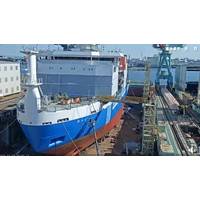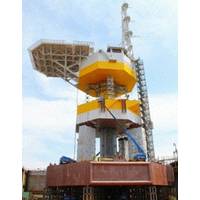
JAMSTEC Launches Japan’s First Arctic Research Vessel
The Japan Agency for Marine-Earth Science and Technology (JAMSTEC) has launched Japan’s first Arctic research vessel, named Mirai II.The construction of the Mirai II vessel began in 2021, at Japan Marine United Corporation’s shipyard.The vessel is 128 meters long, with the with of 23 meters, and draft spanning 8 meters.The vessel’s tonnage stands at 13,000 tons, and is said to be capable of continuously breaking 1.2m of flat one-year ice at a ship speed of 3.0kt.Mirai II will be capable of accommodating 97 people on board, including 34 crew members and 63 researchers.The ship is of
DNV GL Okays New Floating Power Generation Concept
; The FLPS concept considered uses a single point mooring tower yoke for position keeping, if the jetty meeting the draft requirement for both LNG carrier and FLPS is not available. The LNG is stored in two SPB tanks (Self-supporting, Prismatic shape, IMO type B) developed by Japan Marine United Corporation (JMU), IHI’s joint partner and contained within the hull of the FLPS. Regasification takes place in the topside facility located on the deck of the FLPS and the gas is then fed to the power generation system, which uses an energy-efficient combined cycle consisting

Japan Floating Offshore Wind Turbine Project Update
Semi-Sub as part of Phase I has been successfully completed and their delivery to Fukushima is uderway. Background A consortium made up of Marubeni Corporation (project integrator), the University of Tokyo (technical advisor), Mitsubishi Corporation, Mitsubishi Heavy Industries, Ltd, Japan Marine United Corporation, Mitsui Engineering & Shipbuilding Co., Ltd, Nippon Steel & Sumitomo Metal Corporation, Hitachi, Ltd., Furukawa Electric Co., Ltd., Shimizu Corporation and Mizuho Information & Research Institute, Inc. has been participating in an experimental offshore floating wind farm


 February 2025
February 2025





